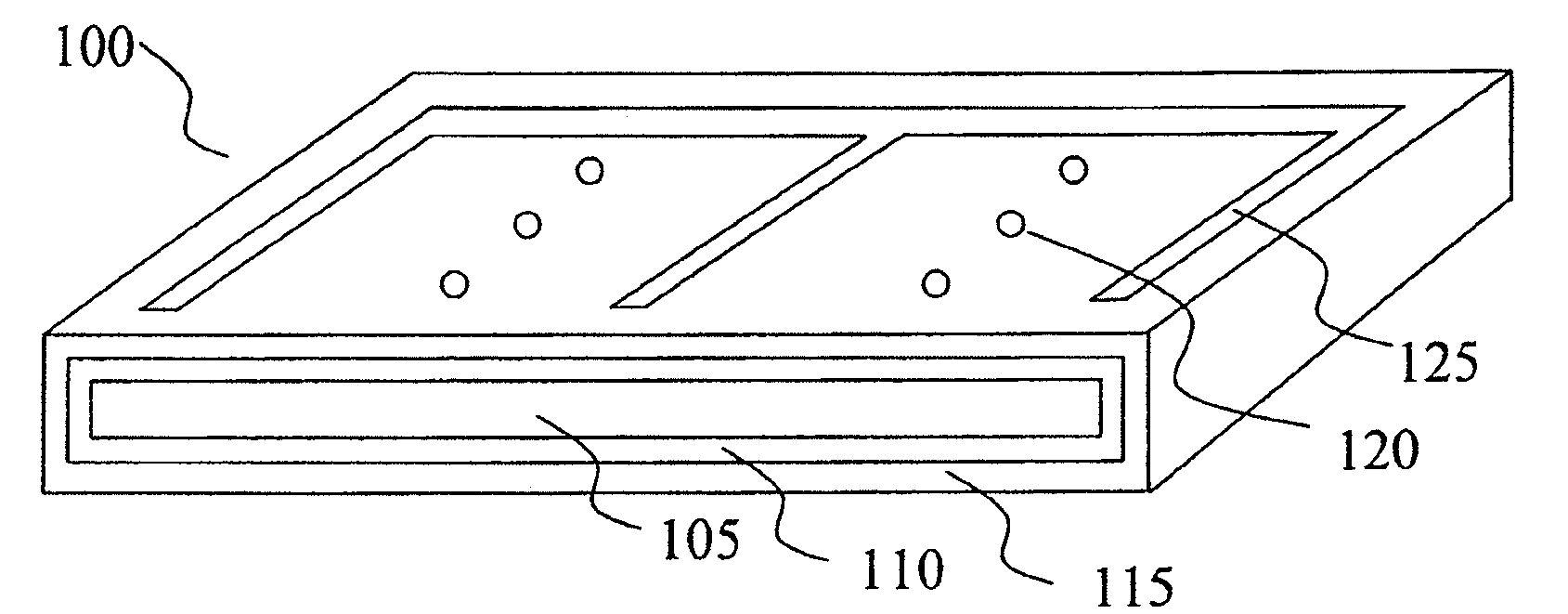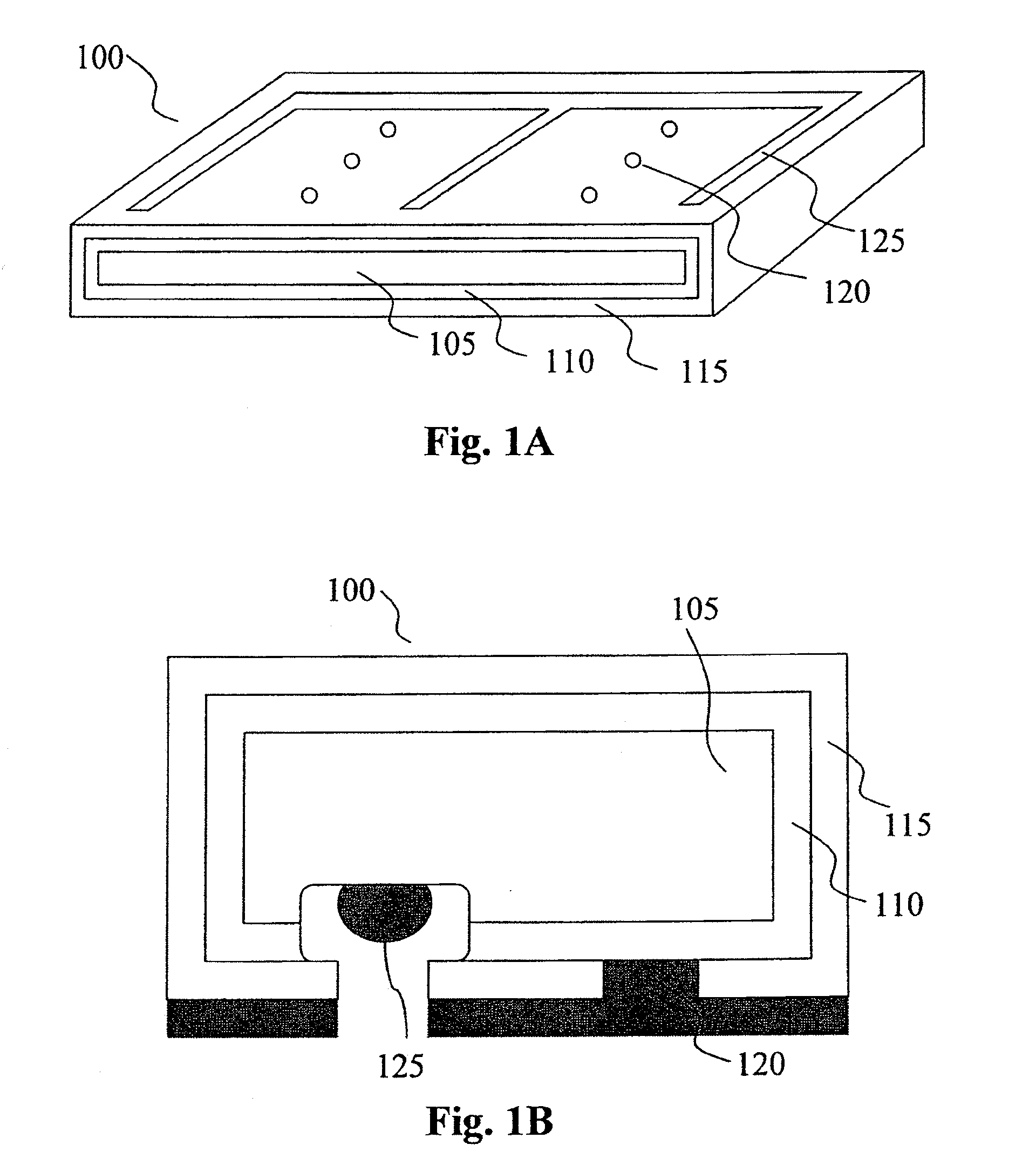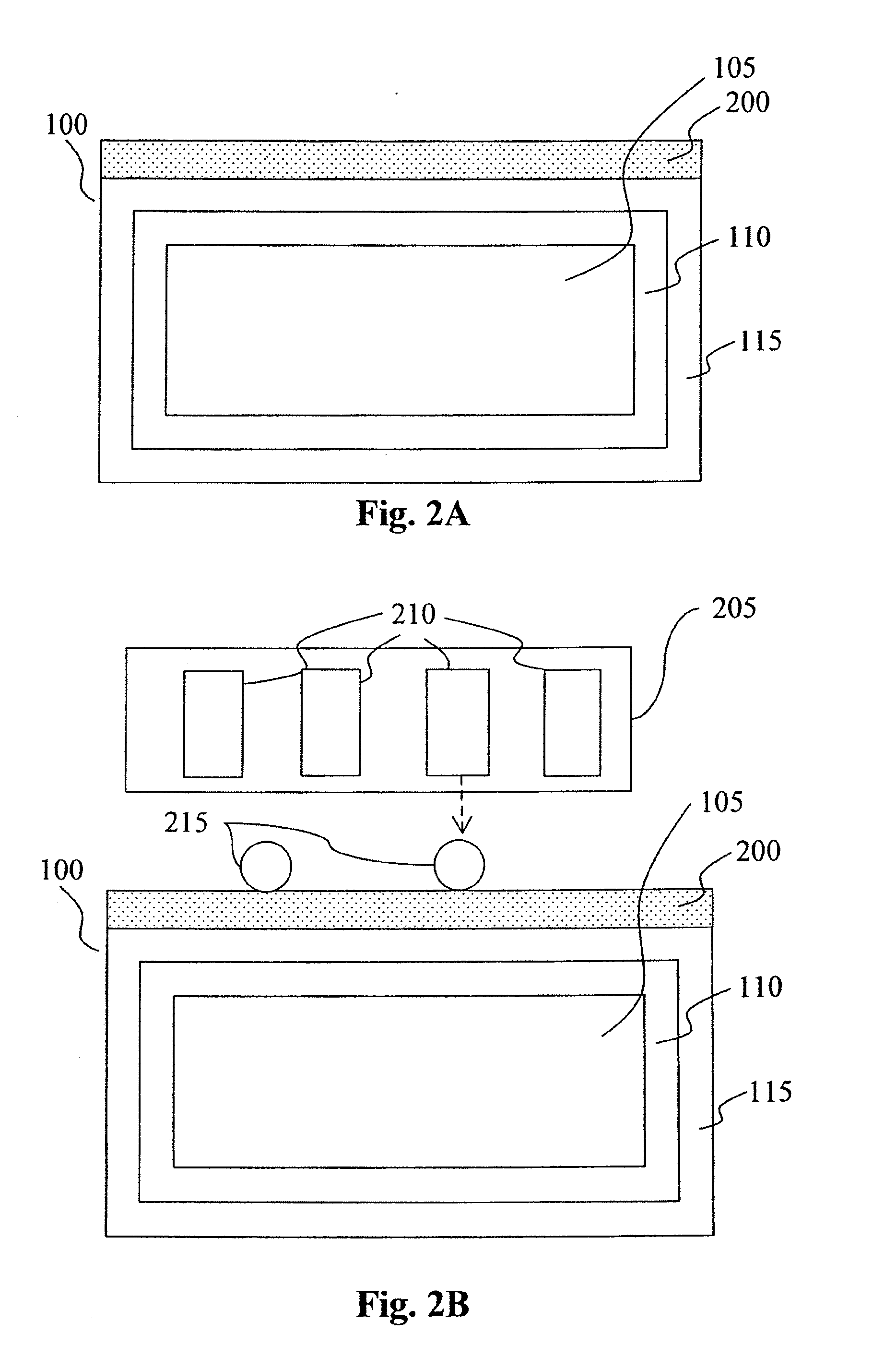Method of forming openings in selected material
a technology of selected materials and openings, applied in the field of device fabrication, can solve the problems of high cost of equipment, complex manufacturing processes currently formulated for thin film devices, and inability to meet the requirements of semiconductor device fabrication methods, and achieve the effect of smaller permeable areas
- Summary
- Abstract
- Description
- Claims
- Application Information
AI Technical Summary
Benefits of technology
Problems solved by technology
Method used
Image
Examples
Embodiment Construction
[0058]The following description is given by way of illustration only and shall not be taken as being in any way limiting as to the spirit or scope of the invention. Referring to the drawings, like numerals designate corresponding parts where possible throughout the several figures.
[0059]A method for forming openings, such as circular holes and continuous grooves, in structures or layers of devices is described below. The openings, once formed, can be used to facilitate metal contacting for the device. The described methods are preferably used in the fabrication of semiconductor devices, such as solar cell devices. However they can also be advantageously utilised in the fabrication of micro-electro-mechanical systems (MEMS) devices. The method of forming the openings requires the use of a resist (or resin) layer which is formed over the device substrate. The resist layer is then patterned by the selective deposition of small liquid drops onto the resist surface. The deposited liquid ...
PUM
| Property | Measurement | Unit |
|---|---|---|
| Thickness | aaaaa | aaaaa |
| Dielectric polarization enthalpy | aaaaa | aaaaa |
| Structure | aaaaa | aaaaa |
Abstract
Description
Claims
Application Information
 Login to View More
Login to View More - R&D
- Intellectual Property
- Life Sciences
- Materials
- Tech Scout
- Unparalleled Data Quality
- Higher Quality Content
- 60% Fewer Hallucinations
Browse by: Latest US Patents, China's latest patents, Technical Efficacy Thesaurus, Application Domain, Technology Topic, Popular Technical Reports.
© 2025 PatSnap. All rights reserved.Legal|Privacy policy|Modern Slavery Act Transparency Statement|Sitemap|About US| Contact US: help@patsnap.com



